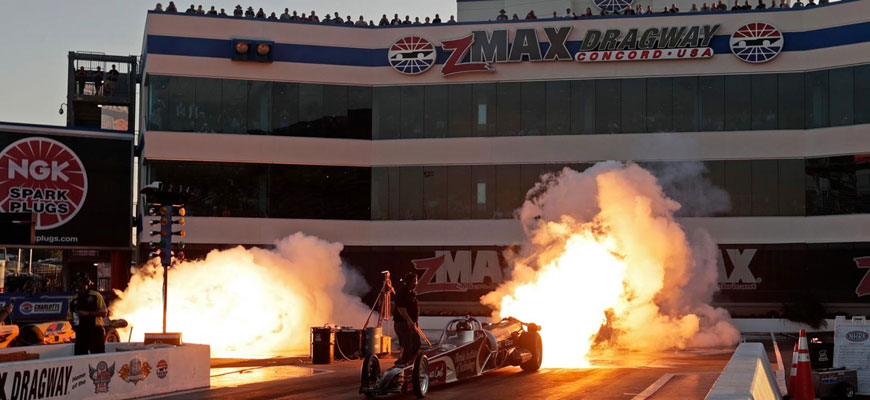
Students capture drag racing’s seismic activity
Geophysics undergrads build their own tools to record, transmit data from ground-shaking vehicles
Posted on: August 30, 2019; Updated on: August 30, 2019
By Craig Brandhorst, craigb1@mailbox.sc.edu, 803-777-3681
Seismologist Thomas Owens knows how it feels when the earth moves — and not just because of his research. The University of South Carolina geophysics professor was once in Seattle when a 5.5 magnitude earthquake hit, and his most recent seismic experience was in some respects even more intense.
This past spring, four of his students measured the intense earthly vibrations caused by super-charged race cars at a Charlotte, N.C., drag strip as part of a special topics course.
“The energy released at the start line is impressive,” says Owens, who had not attended a drag race prior to last fall, when his Geology 548 capstone course conducted a similar experiment. “We went up there not sure what we would be able to record, but we got accelerations at the start line of over 2.5G for the top-fuel dragsters. It’s an impressive experience.”
Not surprisingly, Owens cautions against making comparisons between a seismic event such a large-scale earthquake and what he and his students experienced at the zMAX Dragway, which initiated the collaboration.
One is a cataclysmic natural phenomenon, the other an intense but ultimately brief and harmless man-made spectacle.
“Accelerations of over 1G would usually only happen with pretty large earthquakes, but it’s not apples to apples,” Owens explains. “The ground motion that we’re measuring in an earthquake depends on all sort of things — the size of the earthquake, the distance from the instrument, the site conditions, the types of soils. The ground acceleration from a dragster is a large amount of shaking for a very small amount of time, recorded immediately adjacent to the vehicle.”
Still, there’s a lasting impact on the students who planned, coordinated and conducted the experiment. The students — Jacob Burstein, Joshua Burstein, Gabrielle Herrin, Emma Woodford and Kevin Hurler — even built their own equipment, using small, inexpensive computers called “raspberry pis” and $8 off-the-shelf accelerometers, and developed software to transmit the data back to UofSC and display it on a website in real time.
While this recording was initially attempted in GEOL548, the data recovery was disappointing. “We got some good data, but the reliability was a little bit spotty,” Owens says. And that was just motivation for the students who revisited the project this spring. “Adapting and improving your results is a necessary skill. It’s all part of the scientific process.
"This experiment had all aspects of what they’ll need as geophysicists. ‘Here’s a problem you need to solve. What kind of instruments do you need to solve it? What kind of data do you need to collect and how are you going to process that data?’ This is what these students are going to do for their career. They had to start from scratch and get the information needed to address a problem while weathering the learning process. I was extremely impressed with their skills, enthusiasm, commitment, and thus their success.”
The spring results were impressive with nearly 100 percent data recovery and real-time display of those results. Herrin and Woodford are planning to return to the dragway this fall to tackle more research questions.